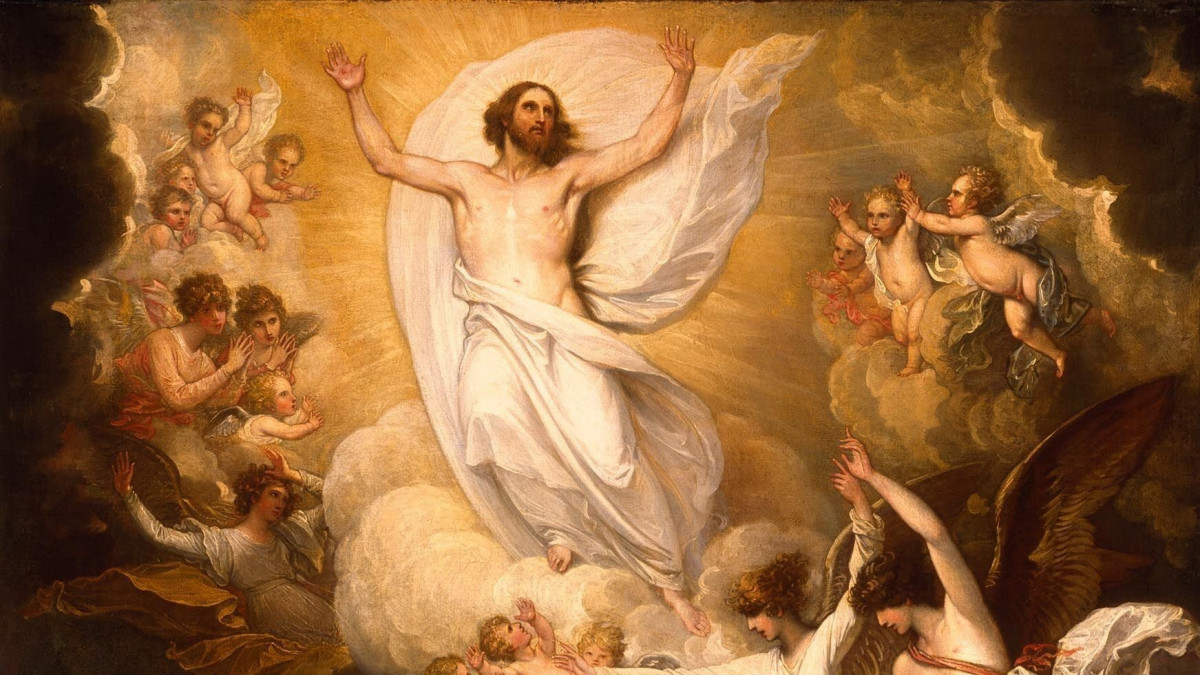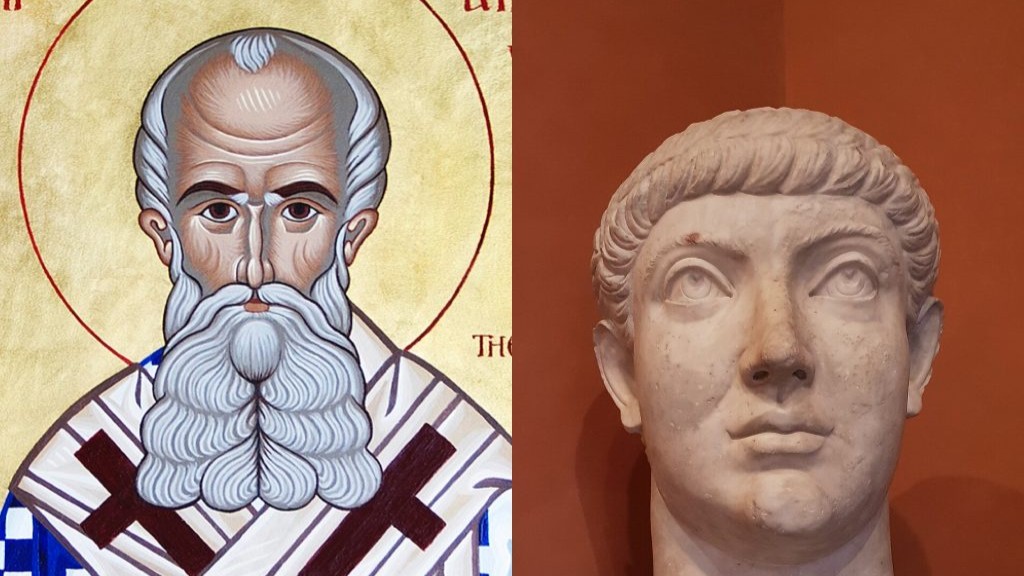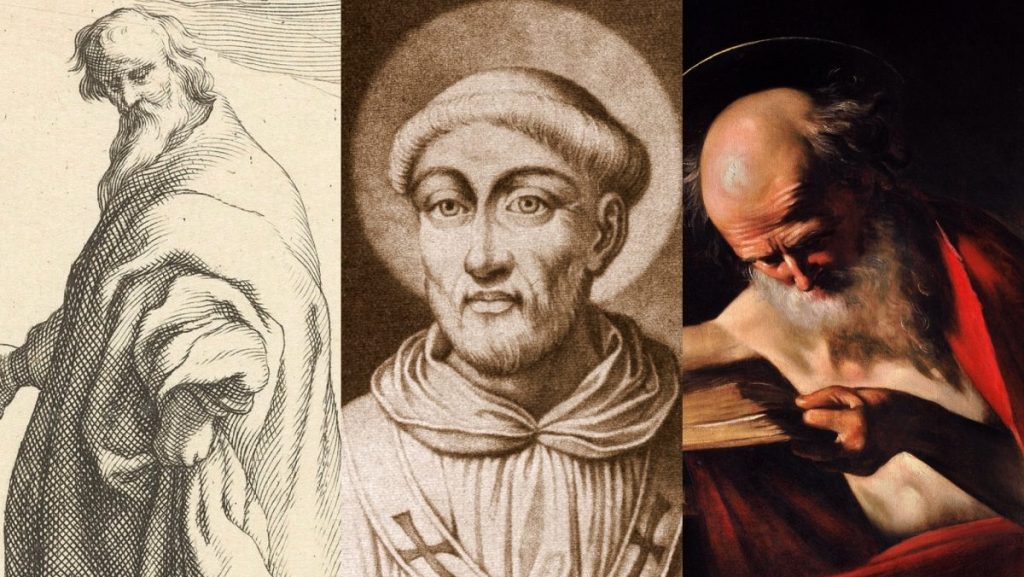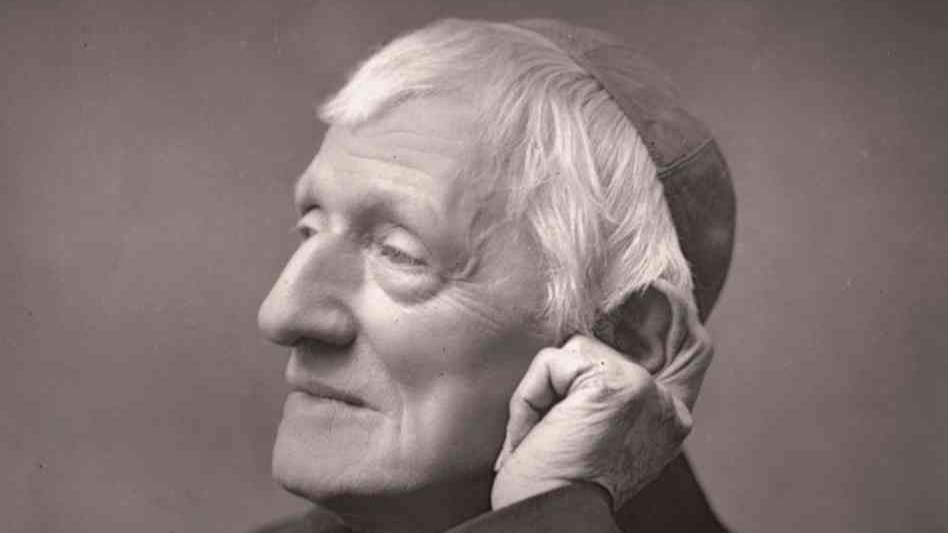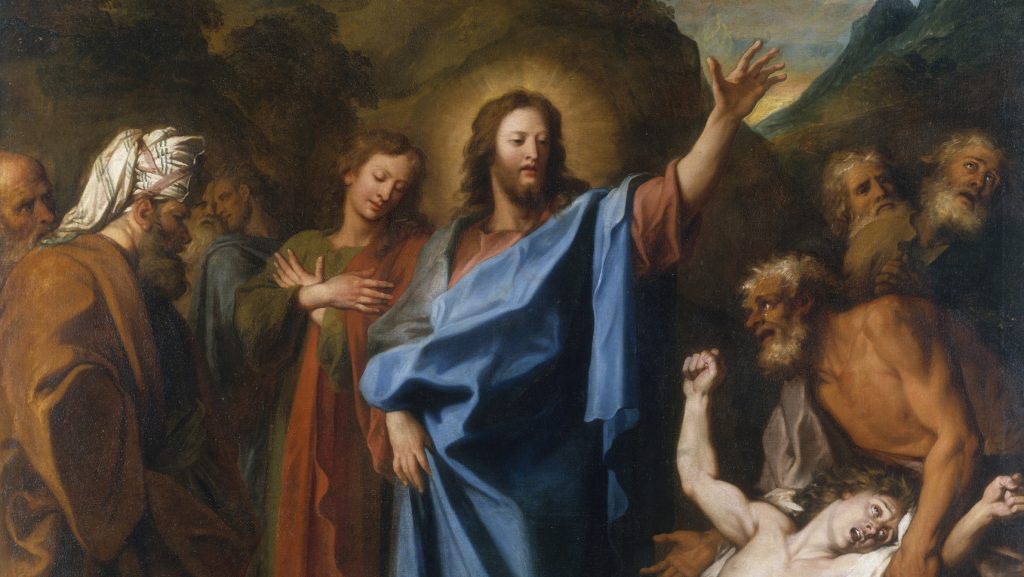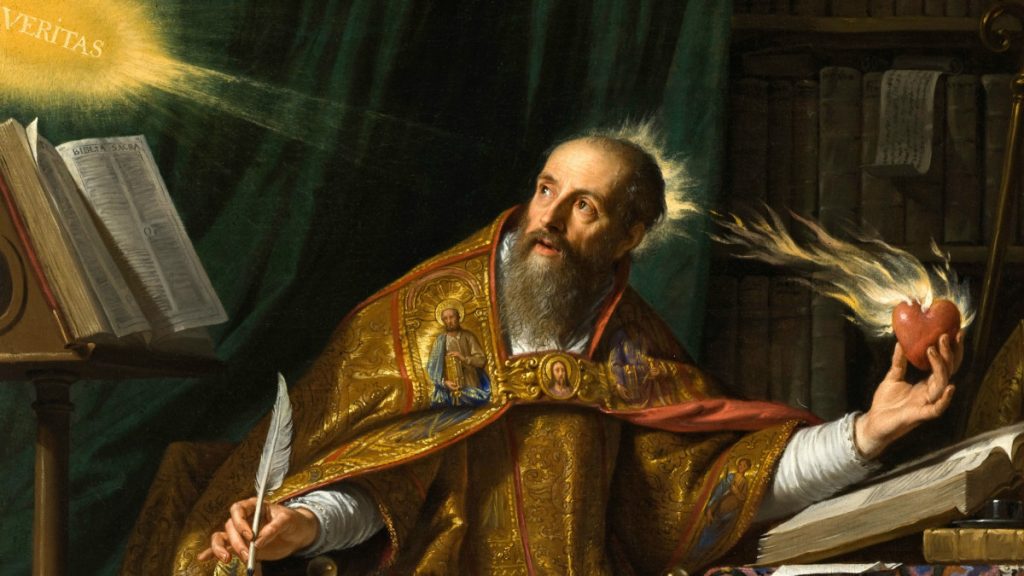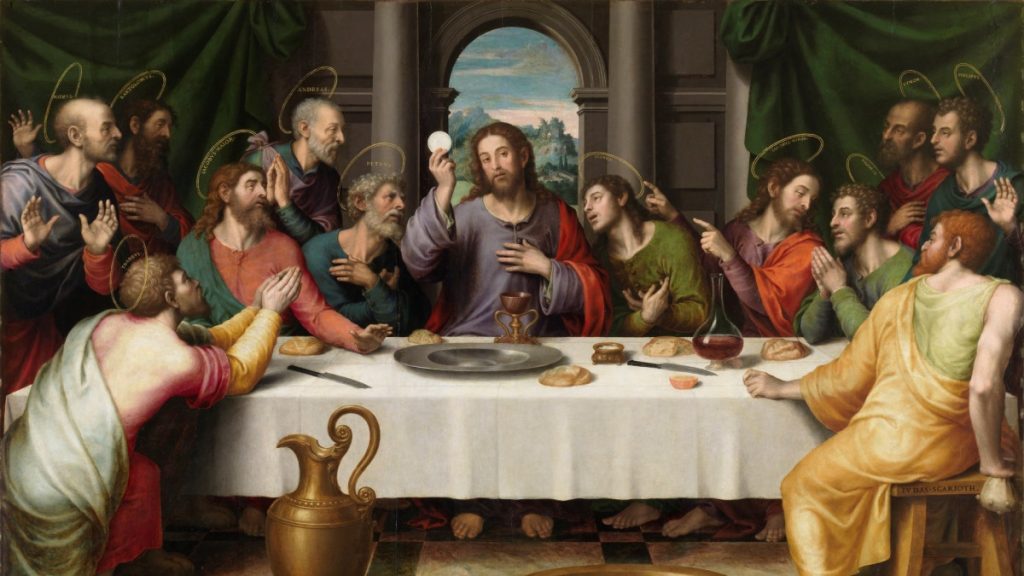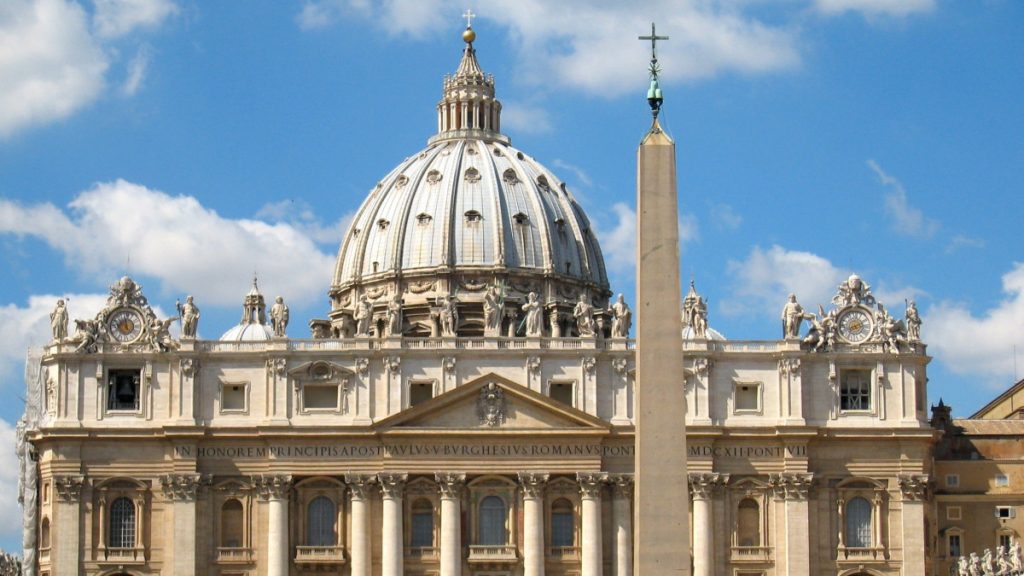This series of articles will show that the Catholic dogmas of Apostolic Succession, Infallibility, and the Indefectibility of the Church are thoroughly biblical.
But prior to doing so, we must set the stage in an admittedly unique way by discussing a topic that may seem unrelated, but is vital to establishing the biblical basis for these dogmas: when Christ began to reign as King.
Summary of the Case
This article will show that Christ began to reign as King of the Messianic Kingdom upon His Ascension in the first century to the present time.
While the importance of this theological fact is often not recognized, it nevertheless plays a vital role in laying the biblical foundation of the aforementioned dogmas, which will be discussed in future articles.
If in fact Christ began to reign as King of the Messianic Kingdom in the first century, this is important—particularly with respect to debates with protestants (and to a lesser extent apostolic churches not in communion with the Catholic Church)—for the following reasons:
- The Old Testament prophecies of the Messianic Kingdom must refer to something that began in the first century, and therefore can’t be dismissed as referring only, or even primarily, to an unrealized eschatological future that will be fulfilled only by Christ’s return;
- The Old Testament prophecies’ description of a unified, indestructible, authoritative Kingdom spread from one end of the earth to the other in which the Messiah exercises judgment must refer to this same Kingdom over which Christ began to reign in the first century; and
- Therefore, Christ’s descriptions of His Church as a polity, and the promises He gives to His Church in the New Testament, must be read as at least the beginning of the fulfillment of the Old Testament prophecies of the Messianic Kingdom.
Introduction
The Catholic dogmas of Apostolic Succession, Infallibility, and the Indefectibility of the Church, are tightly bound together.
Here is a cursory summary of their contents.
The dogma of Apostolic Succession says that the Church is ruled by apostolic authority exercised by the successors of the Apostles, preeminently the successor of St. Peter, the Pope.
The dogma of the Infallibility of the Church says that the Church is infallible (without error) in the official exercise of its apostolic authority for all Christians on matters of faith and morals.
Finally, the dogma of the Indefectibility of the Church says that the Church, as Christ’s Spouse with whom He has become one body, will continue to be a visible, infallible society until Christ’s return, and thus never fully apostatize (defect) from Our Lord.
The reason the seemingly unrelated question of when Christ began to reign as King is so important to proving these Catholic dogmas from Scripture is because each of them revolve around a single issue: the nature of Christ’s Kingdom.
Apostolic Succession concerns who exercises the Kingdom’s authority.
Infallibility concerns how the Kingdom’s authority is exercised.
Indefectibility concerns the visible and invincible nature of the Kingdom’s authority.
Thus, these three dogmas concern the nature of Christ’s Kingdom as a polity; and the issues of who, how, and for how long authority is exercised within it.
But before we dive into these matters, we must first determine when Christ’s Kingdom began.
I realized this only after I began studying the topic of eschatology (theology of the “final things,” or more loosely, the “end times”). As a protestant, I had been exposed to many opinions about various eschatological matters (there is less, but still a good deal of licit opinions within the Catholic Church as well). Perhaps no part of Scripture was more debated than Apocalypse 20, specifically the meaning and timing of the “thousand years” mentioned in verses 4-6.
In short, answering when Christ’s Kingdom begins is an important first step, because it determines whether or not Old Testament prophecies of the Messianic Kingdom will be relevant to the nature of the Church over the past 2,000 years, or purely/primarily refers to yet-to-be fulfilled eschatological realities.
If the fulfillment of the Old Testament prophecies of the Messianic Kingdom are entirely or primarily in the future, then they are far less relevant to the nature of the Church that began in the first century. However, if the Kingdom to which they pointed began to be definitively fulfilled from the first century to the present day, then these prophecies are vital to understanding the nature of the Church, and the events of Christian history.
In short, what is at stake is whether Christ’s reign as King can be sequestered into a purely futuristic Kingdom that has not yet truly appeared (and thus to varying degrees be separated from the nature and history of the Church); or whether that reign actually began in the first century, and the implications that result from that fact.
We will show that Christ began to reign as King over this Kingdom in the first century. The profound consequences of this fact will be unpacked in future articles.
The Beginning of Jesus’s Kingdom, and the Setting up of Apostolic Thrones (Matthew 19, Luke 22, and Apocalypse 20)
Fortunately, Scripture provides a plethora of information that enables us to know with great precision and certainty when Christ began to reign as King.
In St. Matthew’s Gospel, Our Lord speaks with His Apostles of “the new world” that is coming. In this “new world,” the Apostles will exercise judgment over God’s people (Matt. 19:28):
28 Jesus said to them, “Truly, I say to you, in the new world, when the Son of man shall sit on his glorious throne, you who have followed me will also sit on twelve thrones, judging the twelve tribes of Israel.
Note a very important detail as to when this “new world” will begin: “when the Son of man shall sit on his glorious throne.” This “new world” is one in which Christ’s Kingdom has been established. As we shall see, it began at His Ascension.
In St. Luke’s Gospel, the same exchange is recorded, but Our Lord is even more explicit that He is referring to His Messianic Kingdom (Luke 22:28-30):
28 “You are those who have continued with me in my trials; 29 as my Father appointed a kingdom for me, so do I appoint for you 30 that you may eat and drink at my table in my kingdom, and sit on thrones judging the twelve tribes of Israel.
The only other time in the New Testament we see a reference to the setting up of thrones is in Apocalypse 20, after the binding of the dragon which Scripture identifies as the Devil (Apoc. 20:4-6):
4 Then I saw thrones, and seated on them were those to whom judgment was committed. Also I saw the souls of those who had been beheaded for their testimony to Jesus and for the word of God, and who had not worshiped the beast or its image and had not received its mark on their foreheads or their hands. They came to life, and reigned with Christ a thousand years. 5 The rest of the dead did not come to life until the thousand years were ended. This is the first resurrection. 6 Blessed and holy is he who shares in the first resurrection! Over such the second death has no power, but they shall be priests of God and of Christ, and they shall reign with him a thousand years.
The full implications of this verse will be unpacked in future articles. Suffice it to say, this period of time would logically coincide with the beginning of the kingdom Christ told the Apostles they would judge on thrones, and during which other saints would reign with Christ (per Apocalypse 20). Note that Jesus says to the Apostles, “you who have followed me” (Matt. 19:28), that they shall receive thrones because they “have continued with me in my trials” (Luke 22:28). Likewise, in Apocalypse 20, those who reign with Christ are they who are beheaded for their faithfulness to Him (verse 4). In Apocalypse, those who sit on these thrones are not specifically identified as Apostles, but there is undoubtedly a connection, given Jesus’s explicit assertion that thrones would be set on which they would sit. As we’ll explain further in future articles, this can only be the beginning of the “new world” and Kingdom He spoke of.
From these verses of Scripture, we gather that:
- Our Lord will inaugurate a “new world,” which is in fact the beginning of His Kingdom, which will commence when He begins to sit on His throne (this takes place, as we will show, at His Ascension);
- From this throne He reigns over the Kingdom of God’s people (“the twelve tribes of Israel”) given to Him by His Father; and
- The Apostles and “those to whom judgment was committed” (Apoc. 20:4) will exercise judgment in this Kingdom from thrones.
On point one, the throne Our Lord begins to sit on is the throne of David, of which He is the final and permanent successor over the Messianic Kingdom. We take this well-established fact for granted in this article.
On point two, this Kingdom is the Messianic Kingdom promised by God to King David, and prophesied throughout the Old Testament. This will be examined in greater detail in subsequent articles, as the Old Testament prophecies of this Kingdom shed a great deal of light on the nature of the society established by Christ in the first century, the Church.
On point three, this will be relevant to the topic of Apostolic Succession, which we will cover in subsequent articles.
However, it is worth nothing here that Psalm 122 speaks of the House of David1 having “thrones for judgment” (Ps. 122:3-5):
3 Jerusalem, built as a city which is bound firmly together, 4 to which the tribes go up, the tribes of the Lord, as was decreed for Israel, to give thanks to the name of the Lord. 5 There thrones for judgment were set, the thrones of the house of David.
This is significant, because this same “house” (or “dwelling”) of David is referenced by St. James at the Council of Jerusalem, where he quotes the prophet Amos on the rebuilding of the “dwelling of David,” associating it with the Gospel going to the nations (Acts 15:14-15):
14 Symeon [Peter] has related how God first visited the Gentiles, to take out of them a people for his name. 15 And with this the words of the prophets agree, as it is written,
16 ‘After this I will return,
and I will rebuild the dwelling of David, which has fallen;
I will rebuild its ruins,
and I will set it up,
17 that the rest of men may seek the Lord,
and all the Gentiles who are called by my name,
18 says the Lord, who has made these things known from of old’ (Amos 9:11-12).
This is a significant passage because it indicates that the Kingdom inaugurated by the Messiah over the “twelve tribes of Israel” is a Kingdom that includes the Gentiles, who are now engrafted into the New and Eternal Covenant God made with Abraham, by faith rather than circumcision.
The question then becomes: when does this “new world,” this Kingdom, begin?
As Christ said, it begins “when the Son of man shall sit on his glorious throne” (Matt. 19:28), which, we will now prove, took place at His Ascension.
The Ascension: When the Messiah Begins to Sit on His Throne
Fortunately, Scripture is quite clear that Christ begins to sit on His throne when He ascended into heaven. We will examine the evidence for this in roughly the same order it appears in Scripture.
St. Mark’s Gospel is explicit (Mark 16:19):
19 So then the Lord Jesus, after he had spoken to them, was taken up into heaven, and sat down at the right hand of God.
Note that Christ sitting on His throne is described as being “at the right hand of God.” This language appears over and over again throughout the New Testament, and may thus be associated with the enthronement of the Messianic King. Indeed, it comes from the opening verse of a Psalm that Christ and various Apostles interpreted as Messianic (Ps. 110:1):
The Lord says to my lord: “Sit at my right hand, till I make your enemies your footstool.”
In a rather roundabout and Socratic fashion, Jesus applies this verse to Himself by asking the Pharisees a question about the identity of David’s son (Matt. 22:41-46; cf. Mark 12:35-37; Luke 20:41-44):
41 Now while the Pharisees were gathered together, Jesus asked them a question, 42 saying, “What do you think of the Christ? Whose son is he?” They said to him, “The son of David.” 43 He said to them, “How is it then that David, inspired by the Spirit, calls him Lord, saying,
44 ‘The Lord said to my Lord,
Sit at my right hand,
till I put thy enemies under thy feet’ (Ps. 110:1)?45 If David thus calls him Lord, how is he his son?” 46 And no one was able to answer him a word, nor from that day did anyone dare to ask him any more questions.
What Jesus veiled with a question was declared openly at Pentecost when, quoting Psalm 16:8, and then the same Psalm 110:1, St. Peter authoritatively interpreted both as applying to Christ (Acts 2:24-36):
24 But God raised him up, having loosed the pangs of death, because it was not possible for him to be held by it. 25 For David says concerning him,
‘I saw the Lord always before me,
for he is at my right hand that I may not be shaken;
26 therefore my heart was glad, and my tongue rejoiced;
moreover my flesh will dwell in hope.
27 For thou wilt not abandon my soul to Hades,
nor let thy Holy One see corruption.
28 Thou hast made known to me the ways of life;
thou wilt make me full of gladness with thy presence.’29 “Brethren, I may say to you confidently of the patriarch David that he both died and was buried, and his tomb is with us to this day. 30 Being therefore a prophet, and knowing that God had sworn with an oath to him that he would set one of his descendants upon his throne, 31 he foresaw and spoke of the resurrection of the Christ, that he was not abandoned to Hades, nor did his flesh see corruption. 32 This Jesus God raised up, and of that we all are witnesses. 33 Being therefore exalted at the right hand of God, and having received from the Father the promise of the Holy Spirit, he has poured out this which you see and hear. 34 For David did not ascend into the heavens; but he himself says,
‘The Lord said to my Lord, Sit at my right hand,
35 till I make thy enemies a stool for thy feet.’36 Let all the house of Israel therefore know assuredly that God has made him both Lord and Christ, this Jesus whom you crucified.”
He declared the same thing before the Sanhedrin (Acts 5:29-31):
29 But Peter and the apostles answered, “We must obey God rather than men. 30 The God of our fathers raised Jesus whom you killed by hanging him on a tree. 31 God exalted him at his right hand as Leader and Savior, to give repentance to Israel and forgiveness of sins. 32 And we are witnesses to these things, and so is the Holy Spirit whom God has given to those who obey him.”
What Jesus veiled as a question, and St. Peter declared openly, St. Stephen witnessed with his own eyes just prior to his martyrdom (Acts 7:55-56):
55 But he [St. Stephen], full of the Holy Spirit, gazed into heaven and saw the glory of God, and Jesus standing at the right hand of God; 56 and he said, “Behold, I see the heavens opened, and the Son of man standing at the right hand of God.”
Indeed, Jesus uses this motif of the “right hand” several times through the Gospels. For example, when the King welcomes the sheep into the fullness of His eternal Kingdom (Matt. 25:34):
34 Then the King will say to those at his right hand, ‘Come, O blessed of my Father, inherit the kingdom prepared for you from the foundation of the world…’
Most notably, He uses this language to describe Himself at His trial before the Sanhedrin (Matt. 26:62-65; cf. Mark 14:61-64; Luke 22:67-71):
62 And the high priest stood up and said, “Have you no answer to make? What is it that these men testify against you?” 63 But Jesus was silent. And the high priest said to him, “I adjure you by the living God, tell us if you are the Christ, the Son of God.” 64 Jesus said to him, “You have said so. But I tell you, hereafter you will see the Son of man seated at the right hand of Power, and coming on the clouds of heaven.” 65 Then the high priest tore his robes, and said, “He has uttered blasphemy. Why do we still need witnesses? You have now heard his blasphemy.
Jesus seems to be allusively referring to the end times conversion of the Jews in the “hereafter,” when “they” (presumably the leaders of the Jews, and thus the Jews as a whole) will see Him as the true Messiah, one already “seated at the right hand of Power” as He returns to earth. This further reinforces that His sitting at the “right hand of Power” will—in relation to His return—have been something done in the past, namely at His Ascension.
Even the Roman soldiers, when mocking His claims to be King, put a false scepter into His right hand (Matt. 27:28-29):
28 And they stripped him and put a scarlet robe upon him, 29 and plaiting a crown of thorns they put it on his head, and put a reed in his right hand. And kneeling before him they mocked him, saying, “Hail, King of the Jews!”
St. Paul, in his epistle to the Romans, speaks of Christ in the same way. Note that His enthronement entails an ongoing and active intercession for His people (Rom. 8:33-34):
33 Who shall bring any charge against God’s elect? It is God who justifies; 34 who is to condemn? Is it Christ Jesus, who died, yes, who was raised from the dead, who is at the right hand of God, who indeed intercedes for us?
Likewise, in 1 Corinthians, he refers to Christ’s present reign as King while all His enemies are subjected to Him, the last enemy being death (1 Cor. 15:22-27):
22 For as in Adam all die, so also in Christ shall all be made alive. 23 But each in his own order: Christ the first fruits, then at his coming those who belong to Christ. 24 Then comes the end, when he delivers the kingdom to God the Father after destroying every rule and every authority and power. 25 For he must reign until he has put all his enemies under his feet. 26 The last enemy to be destroyed is death. 27 “For God has put all things in subjection under his feet” (Ps. 8:6).
He speaks of the same thing in his epistle to the Ephesians (Eph. 1:15-23):
15 For this reason, because I have heard of your faith in the Lord Jesus and your love toward all the saints, 16 I do not cease to give thanks for you, remembering you in my prayers, 17 that the God of our Lord Jesus Christ, the Father of glory, may give you a spirit of wisdom and of revelation in the knowledge of him, 18 having the eyes of your hearts enlightened, that you may know what is the hope to which he has called you, what are the riches of his glorious inheritance in the saints, 19 and what is the immeasurable greatness of his power in us who believe, according to the working of his great might 20 which he accomplished in Christ when he raised him from the dead and made him sit at his right hand in the heavenly places, 21 far above all rule and authority and power and dominion, and above every name that is named, not only in this age but also in that which is to come; 22 and he has put all things under his feet and has made him the head over all things for the church, 23 which is his body, the fulness of him who fills all in all.
Likewise to the Colossians (Col. 3:1):
If then you have been raised with Christ, seek the things that are above, where Christ is, seated at the right hand of God.
The author of Hebrews—likely St. Paul—references Christ presently sitting at God’s right hand multiple times.
For example, in the first chapter, he says (Heb. 1:3-4, 13):
3 He reflects the glory of God and bears the very stamp of his nature, upholding the universe by his word of power. When he had made purification for sins, he sat down at the right hand of the Majesty on high, 4 having become as much superior to angels as the name he has obtained is more excellent than theirs…
13 But to what angel has he ever said,
“Sit at my right hand,
till I make thy enemies
a stool for thy feet”?
He affirms the same in the eighth chapter (Heb. 8:1-2):
Now the point in what we are saying is this: we have such a high priest, one who is seated at the right hand of the throne of the Majesty in heaven, 2 a minister in the sanctuary and the true tent which is set up not by man but by the Lord.
And again in the tenth chapter (Heb. 10:12-13):
12 But when Christ had offered for all time a single sacrifice for sins, he sat down at the right hand of God, 13 then to wait until his enemies should be made a stool for his feet.
And a final time in the twelfth chapter (Heb. 12:1-2):
Therefore, since we are surrounded by so great a cloud of witnesses, let us also lay aside every weight, and sin which clings so closely, and let us run with perseverance the race that is set before us, 2 looking to Jesus the pioneer and perfecter of our faith, who for the joy that was set before him endured the cross, despising the shame, and is seated at the right hand of the throne of God.
St. Peter affirms the same reality—as he did in the book of Acts—in his first epistle (1 Pet. 3:21-22):
21 Baptism, which corresponds to this, now saves you, not as a removal of dirt from the body but as an appeal to God for a clear conscience, through the resurrection of Jesus Christ, 22 who has gone into heaven and is at the right hand of God, with angels, authorities, and powers subject to him.
And finally, St. John the Beloved Disciple quotes Jesus affirming that He is in fact presently sitting down on His and His Father’s throne as a result of His conquering of death by His cross and resurrection (Apoc. 3:20-21):
20 Behold, I stand at the door and knock; if anyone hears my voice and opens the door, I will come in to him and eat with him, and he with me. 21 He who conquers, I will grant him to sit with me on my throne, as I myself conquered and sat down with my Father on his throne.
Conclusion: Christ’s Reign as King Began at the Ascension
From these words of Scripture, we can be certain that Christ began to reign as King of the Messianic Kingdom in the first century upon His Ascension into heaven to sit on His throne at the right hand of God the Father. Christ Himself explicitly affirms that His sitting on His throne would be the beginning of the “new world” and His kingdom ruled by the Apostles sitting on thrones. Likewise, St. Mark’s Gospel explicitly states this took place at His Ascension, which is affirmed over and over again by the Apostles.
Thus, the Davidic Kingdom promised by God, about which the Psalms and the prophets prophesied throughout the Old Testament, is a Kingdom that in some sense began in the first century, when its King began to sit on His throne in heaven.
While some of these prophecies will in fact be fulfilled at Christ’s return when the Kingdom is fully and eternally realized in all its splendor, because of the aforementioned facts, we know that they also speak to a reality that began in the first century.
Therefore, they cannot be dismissed as applying only to unfulfilled future events.
As we will see, this has profound implications for the dogmas of Apostolic Succession, Infallibility, and the Indefectibility of the Church.
Footnotes
- See 2 Sam. 20:16; 2 Sam. 3:1, 6; 1 Kings 12:19-20, 26; 13:2; 14:8; 2 Kings 17:21; 2 Chron. 10:19; 21:7; Sir. 48:15; Isa. 7:2, 13; 22:22; Jer. 21:12; Zech. 12:7-8, 10, 12; 13:1; Luke 1:27. ↩︎
